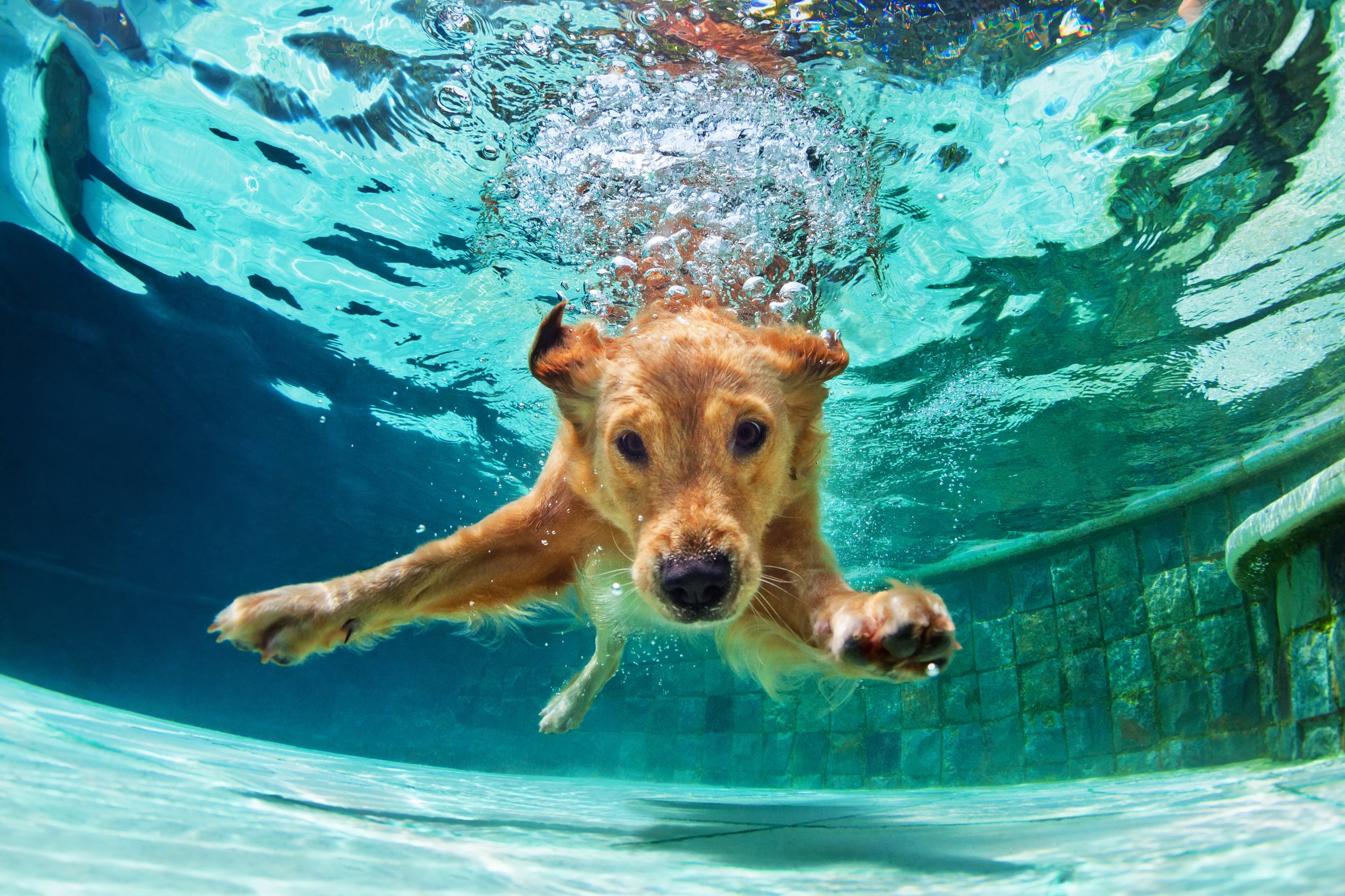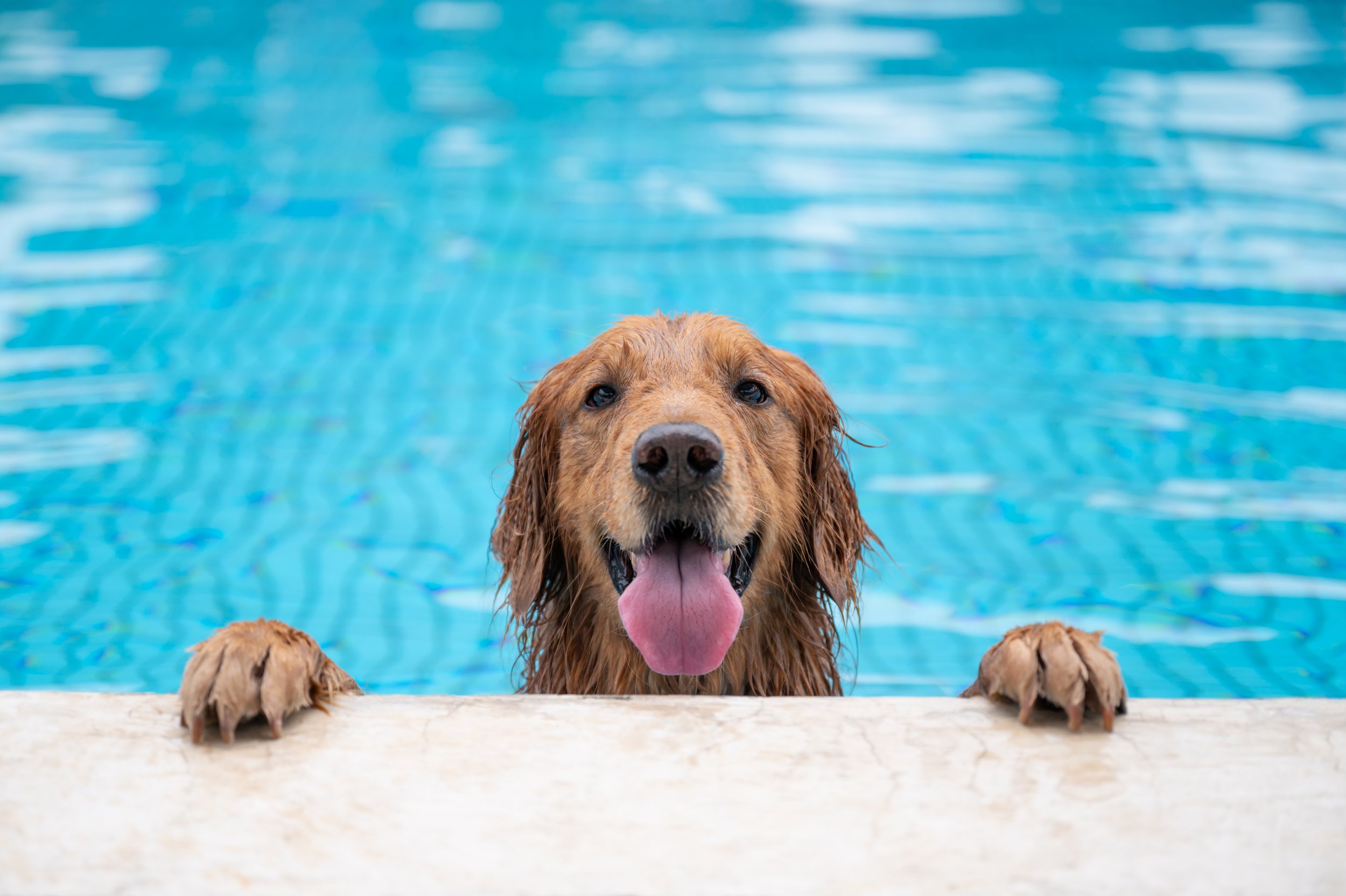Teaching Your Dog to Swim

Teaching your dog to swim is not only a fun activity but also a valuable life skill. Dogs, like humans, can benefit greatly from swimming, especially during the hot summer months.
While many dogs can instinctively stay afloat by dog paddling, learning to swim properly can significantly enhance their safety, health, and enjoyment of water activities. Swimming offers numerous benefits for your canine companion, whether it's cooling off in the summer, getting a full-body workout, or ensuring they can handle surprise water encounters.
Why Teach Dogs to Swim
While some dogs are natural swimmers, others may be hesitant or even fearful of water. Teaching your dog to swim can enhance their physical health, improve their confidence, and provide a safe way to enjoy water-related activities.
Benefits for Your Dog
Swimming is a low-impact activity that provides a full-body workout, helping to maintain a healthy weight and improve cardiovascular health. For dogs that are prone to conditions such as hip dysplasia and IVDD, swimming can be a great alternative to more strenuous activities like agility courses.
During hot weather, swimming allows dogs to stay cool and refreshed, even when the sun is at its highest. Knowing how to swim can be also life-saving, especially if your dog spends time around pools, lakes, or rivers.
Preparation
Choosing the Right Location
Selecting the right location is crucial for a successful swimming lesson. You can’ just toss your pooch into the nearest lake or ocean and expect them to stay composed. A calm body of water, such as a dog-friendly beach, a lake with a gentle slope, or a swimming pool are your best bets. Avoid areas with strong currents, waves, or sudden drop-offs. Always check the water for hazards, especially if it’s in a public space.
Essential Equipment
Before you begin, gather the necessary equipment to ensure your dog's safety and comfort:
Life Jacket: Even if your dog is a strong swimmer, a life jacket provides extra buoyancy and peace of mind. Choose one with a handle on the back for easy lifting.
Floating Toys: These can be used to entice your dog into the water and give them some motivation.
Leash and Collar: A sturdy leash and collar are important for maintaining control, especially as you’re starting out.
Initial Steps
Introducing the Dog to Water Gradually
Start by letting your dog explore the water at their own pace. Begin in shallow water where they can easily stand and feel secure. Encourage them to play near the water's edge and gradually move deeper as they become more comfortable.
Encouraging the Dog with Positive Reinforcement
Use treats, toys, and plenty of praise to create a positive association with the water. Reward your dog for any interaction with the water, no matter how small. Patience is key, as forcing them can create fear and resistance.
Staying Calm and Patient
Your demeanor plays a significant role in how your dog reacts. Stay calm, speak in a soothing tone, and avoid showing frustration. Your dog will take cues from your behavior, so maintaining a relaxed attitude is essential.
Training Techniques
Getting Your Dog Comfortable
Start on Land: Begin by playing with your dog near the water. Use their favourite toys to engage them and create a fun environment.
Enter the Water: Walk into the water with your dog, allowing them to follow you. Keep the water level low, just enough for them to get their paws wet.
Gradual Immersion: Slowly guide your dog deeper into the water, always ensuring they can touch the bottom. Support their belly if needed, and offer treats and praise.
Short Sessions: Keep initial swimming sessions short to prevent anxiety. Gradually increase the time spent in the water as your dog becomes more comfortable.
Using Commands and Rewards
Introduce simple commands like "swim" or "water" to associate with the activity. Reward your dog with a good deal of treats and affection each time they respond correctly. You want to build your dog’s confidence in the water as much as possible.
Gradual Increase in Water Depth
As your dog becomes more at ease in shallow water, gradually increase the depth. Allow them to swim short distances, using toys or treats as motivation. Always stay close and offer support when needed.
Safety Tips
Recognizing Signs of Distress
It's important to be able to identify signs of distress in your dog while swimming. Look for:
Heavy panting or gasping for breath
Struggling to stay afloat or maintain balance
Whining, barking, or attempting to leave the water
If you notice any of these signs, guide your dog back to shallow water and allow them to rest.
Constant Supervision
Never leave your dog unattended while swimming, even if they’ve already become strong swimmers.
Using Life Jackets for Safety
A life jacket is an invaluable safety tool, especially for beginner swimmers. Ensure it fits properly and allows your dog to move comfortably. Having a handle on the back makes it easier to lift your dog out of the water if needed.
Common Issues
Addressing Fear of Water
Some dogs may have a natural fear of water. To address this, go slowly and be patient. Use positive reinforcement and never force your dog into the water. Short, positive experiences will gradually build their confidence. If it really doesn’t work, don’t stress too much – every dog has their preferences, after all.
Dealing with Over-Excitement
If your dog becomes too excited in the water, take breaks to calm them down. Over-excitement can lead to accidents or fatigue. Use commands and lots of praise to keep your dog focused and controlled during swimming sessions.
Managing Health Concerns Related to Swimming
Be mindful of potential health issues related to swimming, such as ear infections or skin irritations. Rinse your dog with fresh water after swimming to remove chlorine or salt, and dry their ears thoroughly to prevent infections. Regular check-ups with your vet will help manage any health concerns.
Conclusion
Teaching your dog to swim can be a rewarding experience that enhances their health, safety, and enjoyment of life. Remember to be patient and consistent, and always prioritise your dog's comfort and safety. With time and practice, your dog will become a confident swimmer, ready to join you in all your water adventures. The long-term benefits of swimming will not only improve your dog's physical well-being but also strengthen the bond between you and your furry friend.


